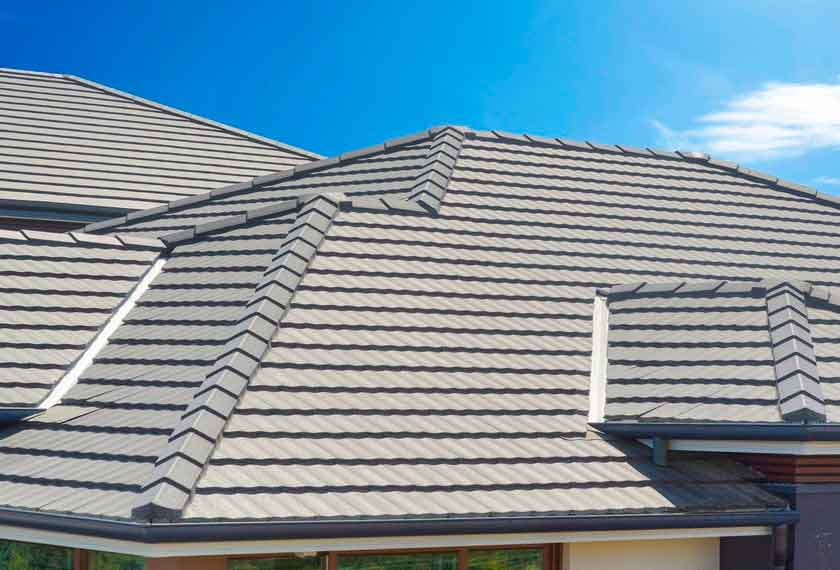Roof slope has a significant impact on the drainage of rainwater and snow accumulation, but it is often overlooked during construction. Roofs with shallow slopes are more prone to water damage while roofs with steep slopes may get covered in large amounts of snow due to gravity. This article will explore how roof slope affects both drainage and snow accumulation, as well as discussing potential solutions for each problem.
Types Of Roof Slopes
Understanding the various types of roof slopes is essential to understanding how they impact drainage and snow accumulation. A roof slope is measured as a ratio, such as 1:12 or 6:12, which indicates that for every foot of rise there are either one foot (1:12) or six feet (6:12) of run. Generally speaking, most residential roofs have an angle between 4:12 and 9:12, although anything from 3:12 on up can be found in modern construction.
The steeper the pitch of a roof, the more efficient it will be at shedding water and snow; conversely, flatter roofs may not drain properly or collect too much weight during winter months. As such, if a homeowner desires a flat-looking rooftop with minimal water accumulation issues then opting for something only slightly below 4:12 would be recommended. On the other hand, those seeking maximum protection against precipitation should select an incline closer to 10:11 or higher.
Advantages Of Roof Slopes For Drainage
Roof slope is an important factor in determining the effectiveness of drainage and snow accumulation. It has been observed that, generally speaking, steeper roof slopes offer more advantages for roof drainage than shallower ones. As such, it is worthwhile to explore what these advantages are, further.
To begin with, a steeper roof slope allows water to flow down faster from the top of the rooftop due to gravity. This can help reduce standing water on roofs after rain events as well as prevent ice dam formation during winter months. Additionally, this advantage may have implications for areas subject to heavy rainfall or storms since the increased flow rate will allow larger amounts of water to be dispersed quickly off the roof surface. Furthermore, through improved drainage performance and reduced risk of damage due to excessive load caused by pooled water or snow melting; a steeper roof slope might also lead to cost savings over time.
Factors Influencing Roof Slope For Drainage
When it comes to understanding the impact of roof slope on drainage and snow accumulation, one must consider a variety of factors. This includes looking at the angle or pitch of the roof, as well as taking into account environmental elements such as precipitation amounts and wind patterns. The angle of the roof is an important factor influencing how water will move along its surface, while other external conditions can influence where this runoff will ultimately drain off.
Furthermore, when considering snow accumulation, another factor that needs to be taken into consideration is ground grade beside the house. If there are high spots around the house due to uneven terrain, then it is more likely that these areas will collect snow more quickly than elsewhere on the property. Even if the roof itself has been designed with a steep gradient in order to facilitate good drainage during rainstorms, any pooled up snow near the foundation could still cause issues with flooding inside basements or crawl spaces. Ultimately, all of these factors should be carefully weighed before deciding on an appropriate roof slope for both effective drainage and minimal snow buildup.
Roof Slope And Snow Accumulation
The impact of roof slope on drainage and snow accumulation is an important consideration when constructing a building. In this context, it is essential to understand the relationship between roof slope and snow accumulation. This article will discuss how roof slope affects snow accumulation and what considerations should be taken into account.
Generally speaking, a steeper roof pitch (greater than 60 degrees) causes more efficient drainage for both rainwater and melted snow due to increased gravitational force. A shallower roof pitch (less than 30 degrees) can cause pooling of water or melting snow, leading to potential damage if not addressed properly.
Additionally, greater angles also tend to reduce the amount of accumulated snow by allowing air flow underneath the shingles which leads to faster evaporation and melting. On the other hand, shallow pitched roofs may accumulate more snow due to lack of air circulation beneath them as well as reduced efficiency in draining off water from runoff or melted ice layers that form atop the surface during cold weather conditions. Thus, choosing the right angle is key in order to achieve proper drainage while minimizing risk of excess snow build up.
Roof Slope And Snow Load
Roof slope and snow accumulation are closely related. While a steep roof can help improve drainage, it can also have an impact on the amount of snow load that accumulates. The angle of the slope affects how much rainwater or melting snow runs off quickly versus slowly accumulating in one area. In addition, steeper roofs tend to accumulate more snow which can increase the risk of collapse during heavy winter storms.
Understanding the relationship between roof slopes and snow loads is important for constructing buildings in snowy climates. It should be taken into account when designing structures since having too shallow of a pitch could lead to water damage while having too steep of a pitch may cause excessive weight from accumulated snowfall. Properly assessing these factors will ensure optimal performance and safety in areas prone to heavy snowfall.
Strategies For Preventing Snow Accumulation On Roof Slopes
When discussing roof slope and snow accumulation, strategies for prevention are a key component. One such strategy is to install adequate insulation in the attic space of sloped roofs. This helps prevent heat loss from the home during cold winter months, which can melt snow on the roof and cause it to be less prone to accumulating over time. Additionally, proper ventilation must be installed at all times throughout the year, ensuring that air is able to circulate efficiently between the exterior and interior spaces.
Using ice dams as another example of how one might avoid excessive snow buildup on a roof’s slope; installing metal edging around its perimeter can help reduce this risk by creating an area where melted water can escape without becoming trapped behind solid barriers. Furthermore, using quality materials when constructing the roof itself will ensure that any moisture or melting snow has nowhere to accumulate, reducing risks associated with standing puddles or other forms of pooled water that may damage the structure below them. Utilizing these strategies allows homeowners to minimize their chances of experiencing issues related to increased snowfall and accumulated moisture on their roofs.
Maintenance Of Roof Slopes For Snow Accumulation Prevention
The slope of a roof can have an impact on drainage and snow accumulation. The maintenance of the roof is paramount in order to ensure that it does not accumulate too much snow, thereby preventing any damage or harm from occurring. As such, this article will provide advice for maintaining roof slopes to prevent snow accumulation.
Firstly, gutter systems should be checked regularly to ascertain if they are blocking up with debris which could cause them to overflow when rainwater accumulates. Additionally, drains should also be cleared of any blockages so as to facilitate proper draining during rainfall. Furthermore, roofs should be inspected throughout the year for signs of wear and tear or cracks in shingles as these can lead to water seepage into attics and other living spaces underneath. Lastly, trees around the house should be trimmed back so as to minimize leaf build-up on the roof’s surface; leaves may hinder effective runoff of precipitation due to their absorbent nature.
In summary, various proactive steps must be taken in relation to maintaining one’s roof slope in order to reduce the chances of excessive snow accumulation causing damage or disruption. Regular cleaning and inspection are essential components of successful preventive measures against unwanted build-ups on sloped roofs.




